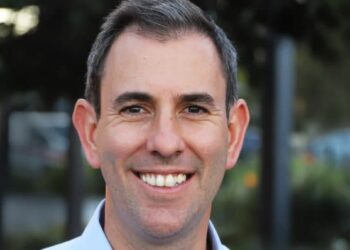In a press conference today, Prime Minister Anthony Albanese has announced that the government plans to introduce a new cap for super which would see the earnings on super balances above $3 million taxed at a concessional rate of 30 per cent, rather than 15 per cent.
The change is set to occur on 1 July 2025, just after the next Federal election.
Mr Albanese said the reform would “strengthen the system by making it more sustainable”.
“The savings that are made from this tax breaks will contribute $900 million to the bottom line of the forward estimates and some $2 billion when it is operating over the full year period,” he said.
“This proposed change does not change the fundamentals of our superannuation system, 99.5 per cent of people with superannuation will be unaffected by this reform. 80,000 people will be impacted by this,” sated Mr Albanese.
This latest announcement follows the release of the Treasury’s consultation on the objective of superannuation last week.
Treasurer Jim Chalmers said there was no plans at this stage for the $3 million cap to be subject to indexation.



Anyone care to discuss the tax implications of a single member fund with a balance over $3m paying the benefits out of the fund to a non-dependent beneficiary? What Labor is proposing is basically a death tax. I wonder how many of the 80,000 will pull their money out of super and upgrade their principal place of residence?
Capturing the data is key, but there are hurdles to jump. Here are just 2.
1.Earnings credited to member accounts include taxable income, untaxed income and distributions from investment reserves. This split is not currently disclosed on the member information statments. No doubt the IT gurus can manage it and the ATO will have time to update their systems.
2. Lodgement of returns on time is important for SMSFs. The ATO can aggregate the information and send the additional tax notices (similar to current Div293 or excess contributions). However there are major backlogs in lodgment of SMSF returns. Lodgment of SMSF returns from FY17 year onwards have been poor. Introduction of TBC/TSB together with the CGT relief and Covid have severely impacted ontime lodgment of all returns. SMSFs are last on the list of the accountants urgent issues.
The above are just 2 basic issues. All hurdles will require significant work before the policy can be implemented. These will take time and will require full detail of the policy before and the mechanics of the tax before any IT changes can be made.
There’s talk of there being a deemed rate of income rather than the tax being applied to actual income. I suspect that funds will tax as they currently do and the ATO will work out the deemed income and determine how much tax needs to be levied.
No indexation! The pollies just love bracket creep where taxes increase automatically due to inflation and they don’t need to do anything except occasionally hand out so-called “tax cuts” that do no more than return some of the money stolen by bracket creep. It will be a lot more than 80,000 people affected by the time this happens in 2025, and will increase incrementally (without indexation) every year after that. Is Chalmers too stupid to realise this, or is it just another tax the so-called rich scheme hatched up in the darkened corridors of power? And by the way, Mr. Treasurer, using a small number of people with $100 million in super to justify extra tax on those with 3% of that amount is like complaining that $1 million executive salaries are unfair and using that to justify extra taxes on people earning $30,000pa. Your justifications for breaking a core pre-election promise are not only weak, they are pathetic!
Inflation in 2022 was 7.8%. If it continues at that rate the maximum amount that can be devoted to a super pension will increase to $3 million on 1 July 2029, which will create some more anomalies in this ever more weird and complex superannuation world Canberra is creating. Lewis Carroll would be proud of them. As absurd as a Mad Hatter’s tea party. “Off with their heads”, I say.
For some clients with a private company, paying tax at 25%, and able to pay franked dividends, letting profits stay in the company will be attractive, especially if retirement is fairly soon…
Presumably a similar model to the one the Coalition inflicted when the Transfer Balance Cap was imposed. Income on the whole balance is apportioned. And the ATO already handles Div 293.
Like BEEs to the Honey Pot. They cant keep their hands out of your superannuation. I suppose the ALP think they dont have the votes of the 80,000 impacted so no electoral damage and they did not have the intestinal fortitude to announce the change at or before last weeks biggest national superannuation conference.
How they are going to administer this? Not all earnings credited to member balances / or disclosed to the ATO on the MIS are taxable. A lot of work required by funds/software developers to capture the information to properly assess this additional tax.
Exempt pension income is already reported on the annual return. They might just have to split this in the future between members when currently it isn’t. There will be work to adjust the software but how is it any different from when the TBC rules were introduced? That was a much more complex set of changes and the industry managed just fine.
I would be interested to see how this is going to be implemented. I imagine that there a number of funds with a mix of account balance over and under $3M.
Software already apportions income automatically between members in a pooled fund. The question is how they will apportion income between assets for a $3m+ balance. I suspect it will be proportional.
It’s already done for ECPI purposes, this will be just more complicated accounting than present and more work for actuaries. Nothing different in concept though than what is already being done.
I’m generally a free market kind of guy but $3M per person for the provision of retirement benefits doesn’t seem too unreasonable to me. I hope one day to have to deal with this provision personally 🙂